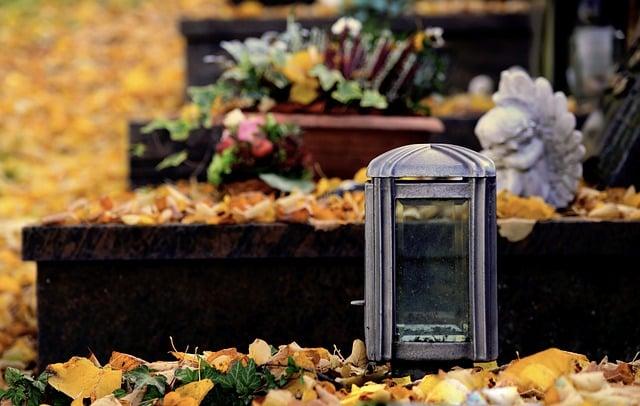In a quaint village, the townsfolk eagerly awaited the arrival of winter. As December approached, they adorned their homes with twinkling lights and fragrant pine. But first came Advent, a time of reflection and anticipation. Each Sunday, families gathered to light candles, sharing stories of hope and joy, counting down to the grand celebration.
When Christmas finally arrived, the village erupted in laughter and song, a vibrant tapestry of love and togetherness. Advent was the quiet whisper of preparation, while Christmas was the joyful shout of fulfillment. Together, they wove the magic of the season.
Table of Contents
- Understanding the Seasons: The Spiritual Significance of Advent and Christmas
- Traditions Unwrapped: How Celebrations Differ Between Advent and Christmas
- The Journey of Preparation: Embracing the Meaning of Advent
- Joyful Revelry: The Festive Spirit of Christmas and Its Cultural Expressions
- Q&A

Understanding the Seasons: The Spiritual Significance of Advent and Christmas
The transition from Advent to Christmas marks a profound journey through the spiritual landscape of the Christian calendar. **Advent**, a season of anticipation and preparation, invites believers to reflect on the themes of hope, peace, joy, and love. It is a time to cultivate a sense of longing for the coming of Christ, both in the celebration of His birth and in the promise of His return. During these four weeks, many engage in practices such as lighting candles on the Advent wreath, participating in daily devotionals, and embracing acts of kindness, all aimed at deepening their spiritual awareness and readiness for the joyous occasion ahead. The colors of Advent—purple and pink—symbolize both penitence and joy, creating a rich tapestry of emotions that guide the faithful through this sacred time.
As the calendar turns to **Christmas**, the focus shifts from preparation to celebration. This season is characterized by the joyous proclamation of Christ’s birth, a moment that signifies the fulfillment of hope and the arrival of divine love into the world. The vibrant decorations, carols, and gatherings reflect the exuberance of this holy event. Key elements of Christmas include the Nativity scene, which serves as a reminder of humility and grace, and the tradition of gift-giving, symbolizing the ultimate gift of Jesus to humanity. The colors of Christmas—gold, red, and green—evoke feelings of warmth, love, and renewal, inviting all to partake in the joy of the season. Together, Advent and Christmas create a continuum of spiritual significance, each enriching the other in the journey of faith.

Traditions Unwrapped: How Celebrations Differ Between Advent and Christmas
As the holiday season approaches, the distinction between Advent and Christmas becomes increasingly significant, each period rich with its own unique traditions and meanings. **Advent**, observed during the four weeks leading up to Christmas, is a time of preparation and anticipation. Families often engage in practices such as lighting candles on an Advent wreath, where each candle represents hope, peace, joy, and love. Many also partake in Advent calendars, opening a new door each day to reveal a small gift or a scripture passage, fostering a sense of excitement and reflection. This period encourages a spirit of waiting and contemplation, allowing individuals to focus on the deeper significance of the season before the festivities begin.
In contrast, **Christmas** is a jubilant celebration that marks the birth of Jesus Christ, filled with vibrant customs and joyous gatherings. The day is often characterized by the exchange of gifts, festive meals, and the decoration of Christmas trees adorned with lights and ornaments. Traditional caroling and the singing of beloved holiday songs fill the air, creating a sense of community and cheer. Families may also attend church services to commemorate the occasion, emphasizing the spiritual aspect of the holiday. While Advent sets the stage for reflection and preparation, Christmas bursts forth with celebration, embodying the joy and love that the season represents. Each phase, while interconnected, offers a distinct experience that enriches the overall holiday spirit.

The Journey of Preparation: Embracing the Meaning of Advent
The season of Advent invites us into a sacred journey of preparation, a time to reflect on the deeper meanings of hope, peace, joy, and love. Unlike the festive celebrations of Christmas, which often focus on the culmination of the holiday with gift-giving and feasting, Advent is a period of anticipation and spiritual readiness. It encourages us to pause and consider the significance of the coming of Christ, both in the historical context of His birth and in our personal lives today. This time allows us to cultivate a sense of **inner stillness**, fostering a connection with the divine that transcends the hustle and bustle of the holiday season.
During Advent, we are called to embrace practices that deepen our faith and prepare our hearts for the celebration of Christmas. This can include:
- **Lighting Advent candles** to symbolize the light of Christ entering the world.
- **Engaging in daily reflections** or prayers that center our thoughts on the themes of the season.
- **Acts of service** that embody the spirit of giving and compassion.
- **Creating a peaceful environment** that encourages contemplation and connection with loved ones.
By immersing ourselves in these practices, we not only honor the significance of Advent but also enrich our experience of Christmas, transforming it from a mere celebration into a profound encounter with the sacred. This journey of preparation ultimately leads us to a deeper understanding of the joy and hope that the Christmas season brings.

Joyful Revelry: The Festive Spirit of Christmas and Its Cultural Expressions
The festive spirit of the holiday season is a tapestry woven from various cultural threads, each contributing to the rich narrative of joy and celebration. While Advent marks the anticipation and preparation for the birth of Christ, Christmas bursts forth as the grand celebration of that event. Advent, observed over four weeks leading up to December 25th, is a time of reflection, prayer, and hope. It invites individuals to embrace a sense of waiting, often symbolized by the lighting of candles on an Advent wreath. This period encourages a deeper connection to the spiritual significance of the season, fostering a sense of community and shared purpose.
In contrast, Christmas is a jubilant culmination of that anticipation, characterized by vibrant festivities and cultural expressions that vary across the globe. The day is often filled with **family gatherings**, **gift-giving**, and **feasting**, each tradition reflecting the unique heritage of different cultures. From the enchanting carols that fill the air to the dazzling decorations that adorn homes, the essence of Christmas is one of joy and togetherness. Celebrations may include:
- Midnight Mass to honor the birth of Jesus
- Festive meals that bring families together
- Community events that spread cheer and goodwill
Ultimately, while Advent prepares the heart and mind for the sacred event, Christmas invites everyone to revel in the joy of that fulfillment, showcasing the diverse ways in which cultures express their festive spirit.
Q&A
-
What is Advent?
Advent is a season of preparation and anticipation leading up to Christmas. It typically begins on the fourth Sunday before Christmas and lasts until Christmas Eve. This period is marked by reflection, prayer, and the lighting of Advent candles.
-
What is Christmas?
Christmas is a celebration of the birth of Jesus Christ, observed on December 25th. It is a festive occasion characterized by various traditions, including gift-giving, feasting, and decorating Christmas trees.
-
How do Advent and Christmas differ in focus?
Advent focuses on preparation and waiting for the arrival of Christ, while Christmas celebrates His birth. Advent is a time of reflection, whereas Christmas is a time of joy and celebration.
-
Are Advent and Christmas celebrated in the same way?
No, they are celebrated differently. Advent often involves rituals like lighting candles and daily devotionals, while Christmas includes festive gatherings, special meals, and various cultural traditions.
As the season unfolds, understanding the distinction between Advent and Christmas enriches our celebrations. While Advent prepares our hearts for the coming of Christ, Christmas joyfully marks His arrival. Embrace both, and let the spirit of the season guide you.




